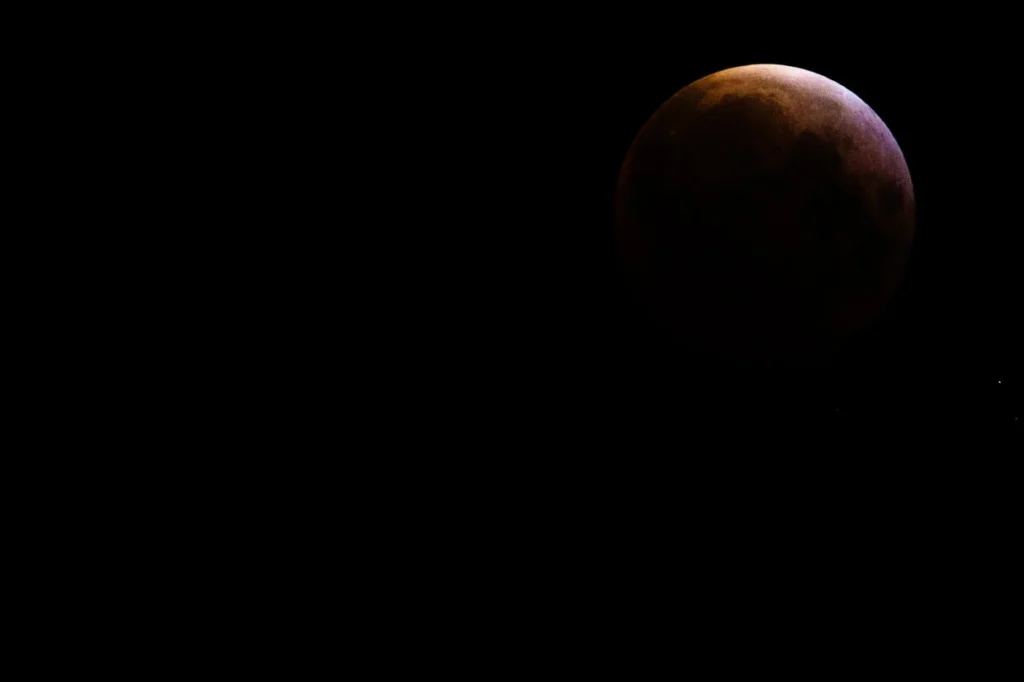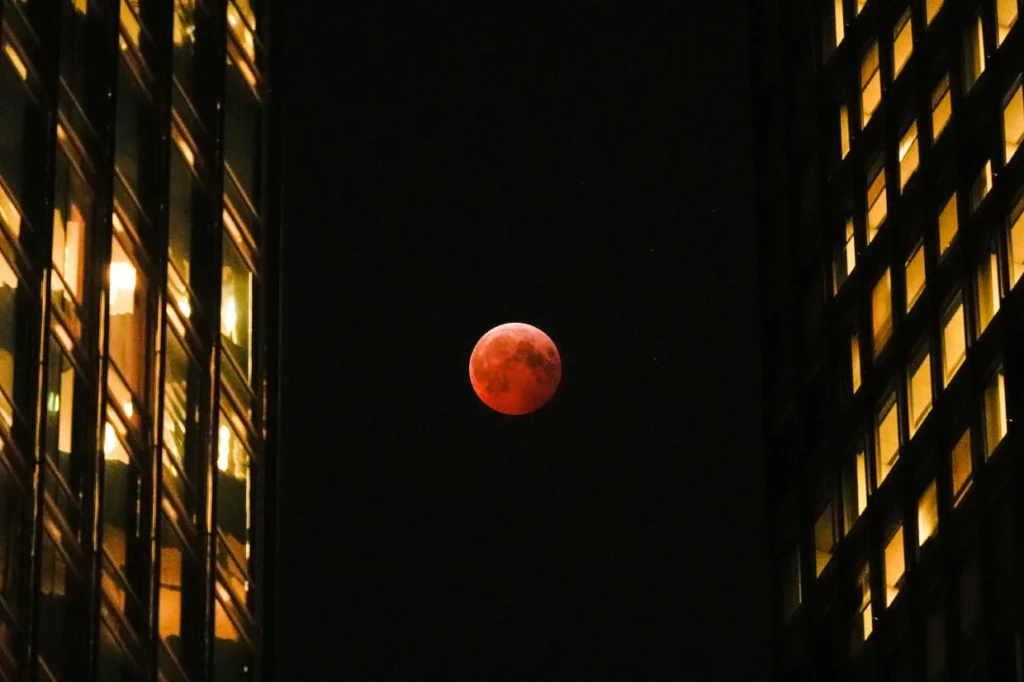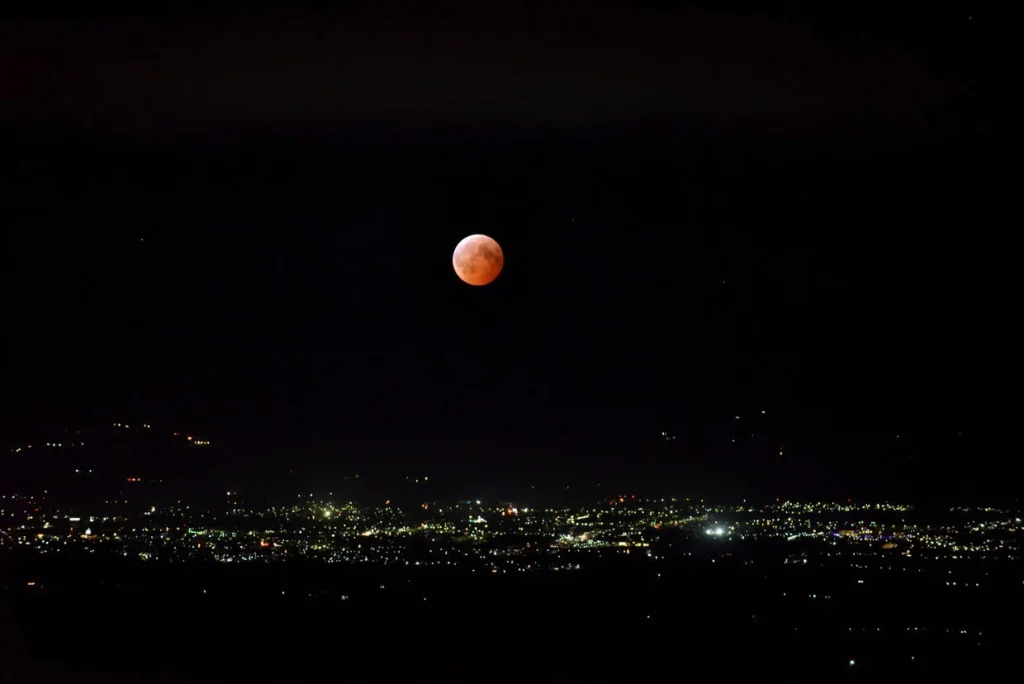
On March 14, 2025, the night sky over the United States will host a celestial spectacle—a total lunar eclipse, commonly known as a “blood moon.” This event offers a unique opportunity to witness the moon cloaked in a reddish hue, a phenomenon that has fascinated humanity for centuries.
Understanding the Blood Moon

A total lunar eclipse occurs when the Earth aligns directly between the sun and the moon, causing the Earth’s shadow to envelop the moon completely. During this alignment, sunlight passing through Earth’s atmosphere is refracted, filtering out shorter blue wavelengths and allowing longer red wavelengths to reach the moon’s surface. This scattering effect imparts a reddish tint to the moon, hence the term “blood moon.”
Visibility and Timing

The March 14, 2025, blood moon will be visible across North and South America, with North America experiencing optimal viewing conditions. The eclipse will commence at approximately 3:57 AM Eastern Standard Time (EST), with totality—the phase where the moon is entirely within Earth’s shadow—occurring between 6:25 AM and 7:32 AM EST. The entire event will span about six hours, concluding around 10:00 AM EST.
The Emotional Impact of Celestial Events

Celestial events like the blood moon have long been sources of wonder and introspection. For many, witnessing such a phenomenon evokes a profound connection to the universe, reminding us of our place within the cosmos. The ethereal beauty of a moon bathed in red can inspire feelings of awe, humility, and unity, as countless individuals across the continent share in the experience.
Astrological Perspectives
Astrologically, lunar eclipses are considered powerful events that signify endings, transformations, and revelations. The March 14, 2025, eclipse occurs in the sign of Virgo, which emphasizes themes of organization, health, and service. This alignment encourages individuals to reflect on their daily routines, wellness practices, and ways they contribute to their communities. It’s seen as an opportune moment to release habits that no longer serve one’s higher purpose and to embrace positive change.
Cultural Significance

Throughout history, blood moons have been imbued with cultural and spiritual significance. In various traditions, they are viewed as omens or messages from the divine, prompting reflection and sometimes forewarning change. In contemporary times, while scientific understanding prevails, the allure of the blood moon continues to captivate, serving as a reminder of the mysteries and wonders of the universe.
Preparing to Witness the Eclipse
To fully experience the 2025 blood moon, consider the following tips:
• Timing: Plan to be outside during the peak of the eclipse, particularly during totality, to witness the most dramatic phase.
• Location: Find an area with an unobstructed view of the sky, away from city lights, to enhance visibility.
• Equipment: While the eclipse is visible to the naked eye, using binoculars or a telescope can provide a more detailed view.
• Photography: For those interested in capturing the moment, a camera with manual settings on a tripod is recommended to accommodate the low-light conditions.
Community Events and Shared Experiences
Many communities across the U.S. organize events to observe celestial occurrences like the blood moon. Planetariums, astronomy clubs, and educational institutions often host viewing parties, providing telescopes and expert insights to enrich the experience. Participating in such gatherings can enhance the sense of wonder and provide educational opportunities for individuals of all ages.
Reflecting on Our Place in the Universe
Witnessing a blood moon serves as a poignant reminder of the vastness of the cosmos and the intricate dance of celestial bodies. It offers a moment to pause and reflect on our existence, the passage of time, and the natural phenomena that occur beyond our control yet profoundly impact our perception of the world.
Conclusion
The total lunar eclipse of March 14, 2025, is more than an astronomical event; it’s an invitation to connect with the universe and with each other. Whether you’re an avid astronomer or a casual observer, taking the time to witness the blood moon can inspire awe and contemplation, fostering a deeper appreciation for the natural world and our place within it.






